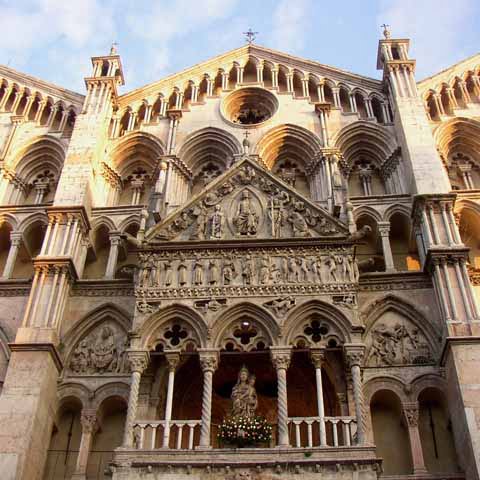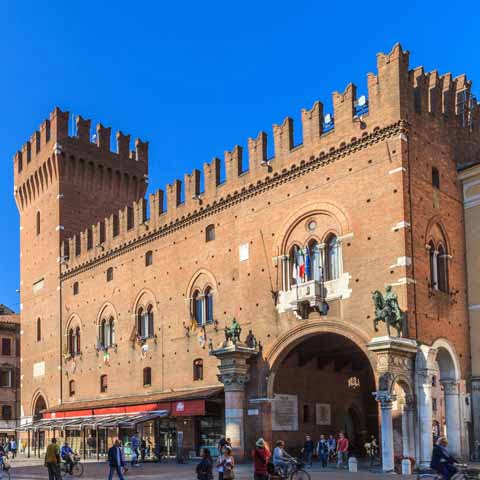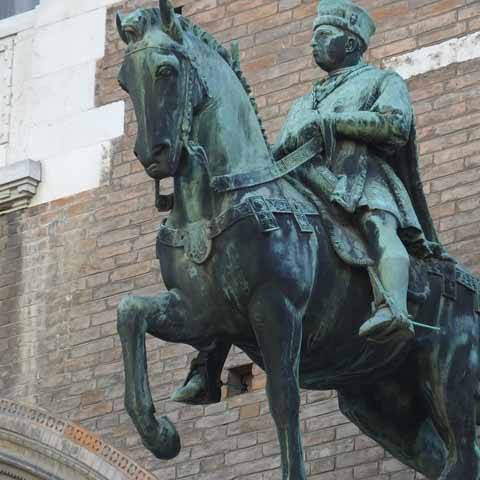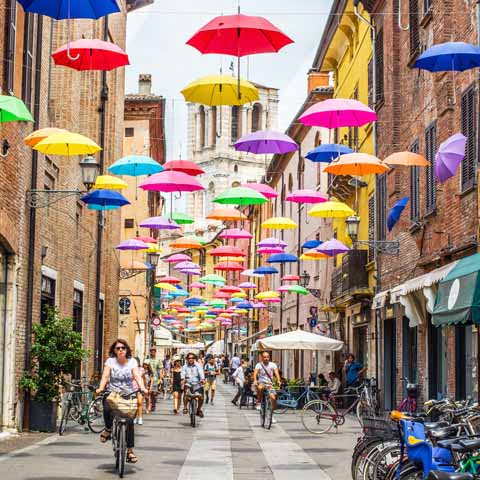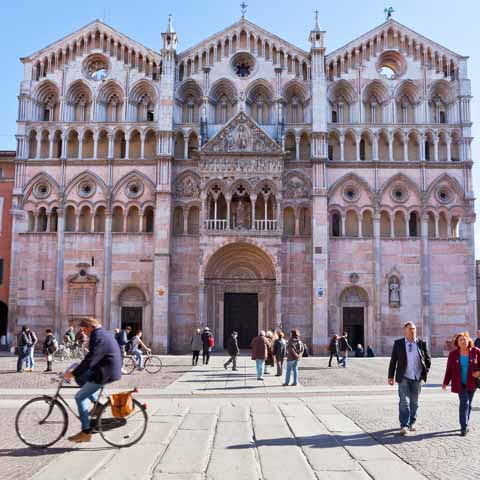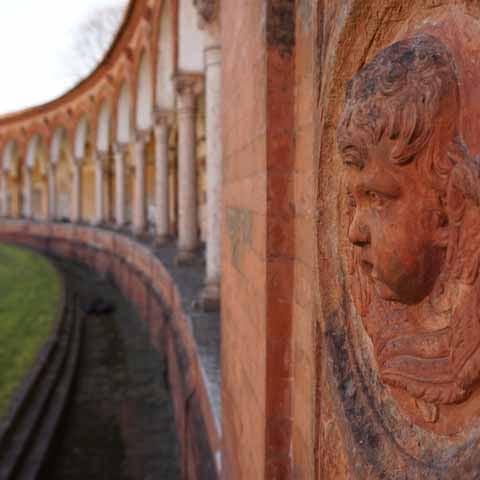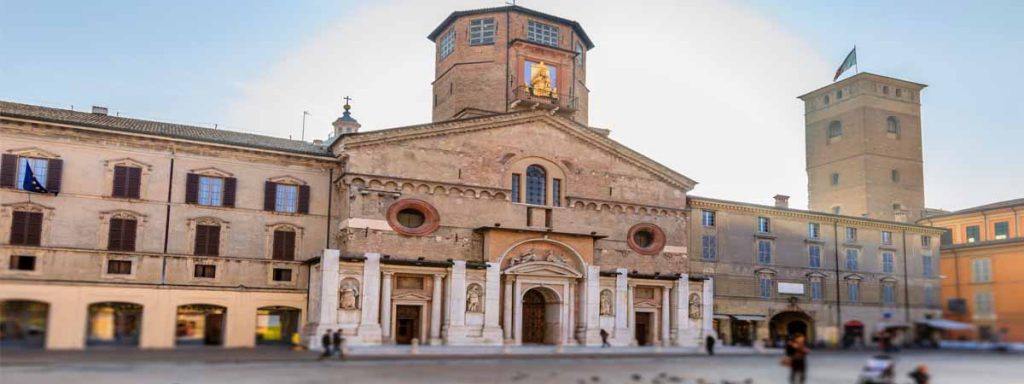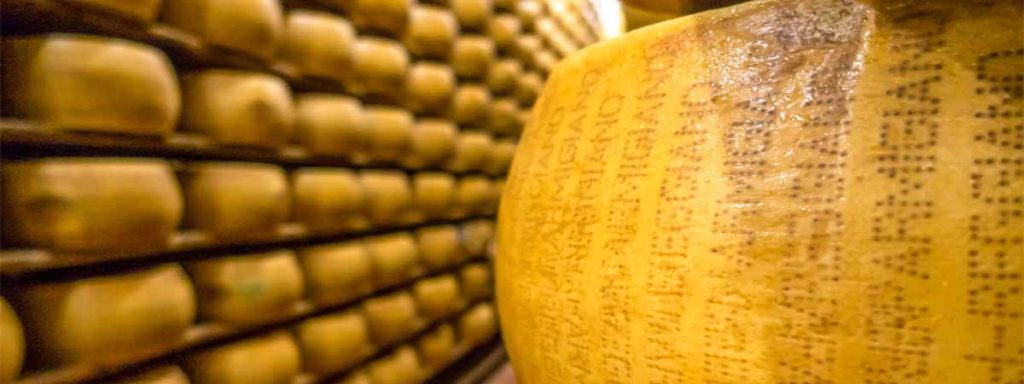The Renaissance city of Ferrara offers a culturally rich destination that is sure to satisfy any traveler. With a history grounded in the cultural explosion of the Renaissance, Ferrara has deep roots in art, architecture, education, music, literature, and religion.
Though the golden age of the city was certainly during the Renaissance, the history of the town stretches all the way back through the Middle Ages. To this day, one can still view the ancient origins of the city in the old city walls that once surrounded the settlement before it began its expansion, and through the famed National Archaeological Museum located in one of the historic palaces that dot the city. The medieval quarters of the city are separated from the Renaissance sides of the city by a great boulevard constructed in the early sixteenth century by Ercole I d’Este.
For the greatest look into the Renaissance period that so defines Ferrara, consider visiting the Castello Estense, where one can peer into the past and catch a glimpse of how life was back in the fifteenth and sixteenth centuries. The castle was built to protect the noble family after a riot threatened then-Marquis Niccolò II d’Este in the late fourteenth century.
And of course, Ferrara’s offerings do not end in the Renaissance with the Este family. After being absorbed into the Papacy following the death of the last of the Este family, Ferrara became a university town second only to Bologna, and was a major center of higher learning and a minor center of trade. Perhaps one of the city’s more interesting stories to tell, though, is of its history as a center of Jewish culture.
During the reign of the Este clan, the family was welcoming displaced Jews from all over Europe who were afforded the same rights as the rest of the general population, leading to a population of over 2,000 Jews in a total population of 30,000 during the city’s golden age. Additionally, Ferrara is the only city in Emilia-Romagna with a Jewish population that can be traced from the modern era all the way back to the Middle Ages.
ART
During its height, the Este family was a generous patron of the arts, sponsoring and promoting the talents of dozens of notable artists and visionaries. Many of them, including Cosmè Tura, Francesco del Cossa, and Dosso Dossi composed, among many others, the famed “School of Ferrara.” In addition to the local artists, the Este Court attracted an impressive number of influential artists who completed works in Ferrara including Andrea Mantegna, Giovanni Bellini, Piero della Francesca, and Titian.
Ferrara kept up its history as a city of the arts through the nineteenth and twentieth centuries, hosting a slew of other artists including the likes of Giorgio de Chirico and Filippo de Pisis.
One can view many of the works of the most notable painters of the Emilia-Romagna region in Ferrara’s own Palazzo dei Diamanti Art Gallery. The gallery, already impressive on the outside for its marvelous marble exterior, sits next to the Parco Massari and contains an abundance of Renaissance era art from the School of Ferrara in addition to other works from the Middle Ages to the eighteenth century. The museum also hosts special temporary exhibitions throughout the year.
Another exhibition space is the Pavilion of Contemporary Art, which displays work by international artists as part of temporary exhibitions, while the Modern and Contemporary Art Museum displays works by national and international modern artists in addition to hosting temporary exhibitions.
ARCHITECTURE
One of the first Italian cities to break away from the Roman style of city planning, Ferrara is notable for being one of the birthplaces of modern urban development. Championed by the genius Renaissance architect Biagio Rossetti, the entire city is an architectural marvel with buildings meant to complement each other and the city itself becoming a work of art all its own.
For more examples of fascinating architecture, consider visiting the Cathedral of San Giorgio. Though constructed from humble brickwork, the cathedral boasts a beautiful array of columns and arches, masterfully blending the Romanesque and Renaissance styles. The exterior features a bell tower, while inside travelers can admire Baroque elements as well as artwork by Guercino and Giovanni Marchiori, among others.
Perhaps the greatest architectural marvel of the city, though, is the Castello Estense. The fourteenth century structure is surrounded by a traditional moat and features impressively high castle walls and battlements. Once inside, travelers can admire the sheer grandiose beauty of the Gothic and Baroque art and architecture that was so endemic to the Renaissance period. Preserved living quarters and apartments highlight the rule of the Este family, and include phenomenal frescoes, rich, decorative architecture, and even a model of the castle in miniature. One can also view such marvels as the ornately painted and decorated Chamber of Dawn and Ducal Chapel, or take a look down in the Dungeons where a darker chapter of the city’s history lies. Also of note are the four towers of the castle that stand at each corner, such as the Torre dei Leoni, which offers beautiful views of Ferrara.
Palazzo Schifanoia was built as a recreational palace for the Este family during the fourteenth century. The fourteenth century west wing features Ferrara’s Civic Museum, while the east wing was constructed during the fifteenth century by Duke Borso d’Este. Of particular interest is the Salone dei Mesi, which is home to a magnificent fresco cycle depicting the months of the year that dates back to the fifteenth century.
Just outside of Ferrara, the Pompose Abbey stands as a true marvel of Romanesque architecture. Dating back to the eighth and ninth centuries, the marble, terracotta, and maiolica tile decorations are reminiscent of Ravenna’s beautiful churches. The interior is filled with geometric symbols and other artistic motifs, while the exterior is complemented by the adjacent bell tower that was constructed during the eleventh century.
LITERATURE
The cultural history of Ferrara is not limited to art and architecture. During the Renaissance, the prestige of the Este Court attracted some of Italy’s greatest poets to work in Ferrara including Torquato Tasso, author of the epic poem La Gerusalemme liberata, Ludovico Ariosto, author of the epic poem Orlando Furioso, and Matteo Maria Boiardo, author of the epic poem Orlando Innamorato.
Several centuries later, Italian writer Giorgio Bassani, who was born in Bologna to a family originally from Ferrara, spent much of his professional career in Ferrara. Bassani is best known for his 1962 historical novel Il giardino dei Finzi-Contini (The Garden of the Finzi-Continisi), which was set in Fascist Era Ferrara.
CINEMA
Ferrara was the birthplace of two important Italian film directors: Florestano Vancini and Michelangelo Antonioni. The latter is considered to be one of the greatest directors in the history of Italian cinema. Both directors filmed some of their works in Ferrara, such as Vancini’s La lunga notte nel ’43 (1960) (adapted from the short story by Giorgio Bassani) and Antonioni’s Cronaca di un amore (1950) and Al di là delle nuvole (1995), which was co-directed with Wim Wenders. Ferrara is also the setting of Il giardino dei Finzi-Contini (1970), which was directed by Vittorio De Sica and adapted from the novel by Giorgio Bassani.
Other films set in Ferrara include Ossessione (1943), La visita (1963), Amore amaro (1974), Gli occhiali d’oro (1987), Il mestiere delle armi (2001), and E ridendo l’uccise (2005),
MUSIC
Ferrara native Girolamo Frescobaldi was the composer of one of the most important pieces of Renaissance music, the Fiori musicali. Known in English as Musical Flowers, this piece written for keyboard and organ would go on to be studied for centuries, including by such renowned musicians as Johann Sebastian Bach.
SCIENCE
Ferrara is home to the Camera Anecoica Acustica, a research laboratory founded in 2008 by the University of Ferrara. Here, researchers study and create experiments in the field of acoustics, and the laboratory is also used for industrial certifications.
Ferrara’s vast cultural landscape is, without a doubt, due to the influence of the House of Este during the Renaissance period. The city, renowned for its grand Castello Estense and other masterpieces of Renaissance architecture, is the perfect place to experience an important part of Italy’s cultural heritage.
Don't just see Italy, live it.
Your dream trip to Italy has never been closer
No more endlessly scrolling travel sites. Our travel experts will craft the perfect, one-of-a-kind trip just for you.

300+
DESTINATIONS
We offer more Italian destinations than any travel site. Do and see more with Trips 2 Italy.
1 (of a kind)
ITINERARIES
Because your dream trip to Italy should be designed for you, not for the masses.
100%
PEACE OF MIND
From flights and accommodations, to food and activities - we take care of every detail.
